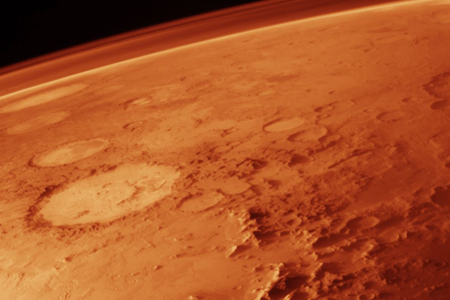Evidence For WATER Flowing On Surface Of MARS Continues. Spacegasm Ahoy.
The Martian Chronicles was actually a future divined by Rad Bradbury. Such a future will soon come to pass, as evidence for flowing water on the surface of Mars refuses to go away. So say we all! Or something.
io9:
Last August, NASA’s HiRISE orbiter spotted strange streaks on the Martian surface that most likely were the result of flowing water on the planet’s surface. Now, eight months later, scientists still haven’t come up with any better explanations.
That’s important because of the old scientific maxim that “extraordinary claims require extraordinary evidence.” The existence of water flowing on Mars is just about as extraordinary a claim as one could make about the Red Planet – only proof of life on Mars would be a significantly bigger deal. And while we probably can’t consider this 100% confirmed until we get a lander down on the planet to check out just what’s causing the streaks in these craters, we can still examine all other competing explanations to see if any of those work better.
So far, salty brines and liquid water really do seem like the best way to account for what the researchers have dubbed recurring slope lineae, or RSL. As Scientific Americanreports, they have discovered these RSL now on about two dozen different slopes, and so far nobody has been able to come up with a plausible explanation for all these slopes that doesn’t somehow involve the presence of liquid water. As University of Arizona researcher Alfred McEwen puts it, “No one has come up with alternative models that they believe. Nor have we.”
The recent Lunar and Planetary Science Conference also offered some strong supporting evidence for the liquid nature of the RSL, courtesy of Oregon State researcher Joe Levy.Scientific American explains:
Using satellite observations of Antarctic water tracks, Levy and a colleague found that they could estimate the soil’s permeability from orbit by measuring how the tracks propagated downhill. And that estimate agreed reasonably well with the actual soil properties, which Levy and his colleagues have measured in field studies. Applying the same calculations to Mars, he concluded that the RSL could be explained by brines if the slopes had the permeability of sand or silt. That matches the kind of soil expected to prevail at the sandy RSL sites. In other words, whatever is moving down the Martian slopes behaves as liquid would in that environment.
Okay so clearly I don’t think the Martian Chronicles shall come to pass anytime (soon), but let’s just think about this for a moment. There is mounting evidence that there is water flowing on the surface of the Red Planet. Clearly the Prothean artifacts can’t be far behind. Clearly.




